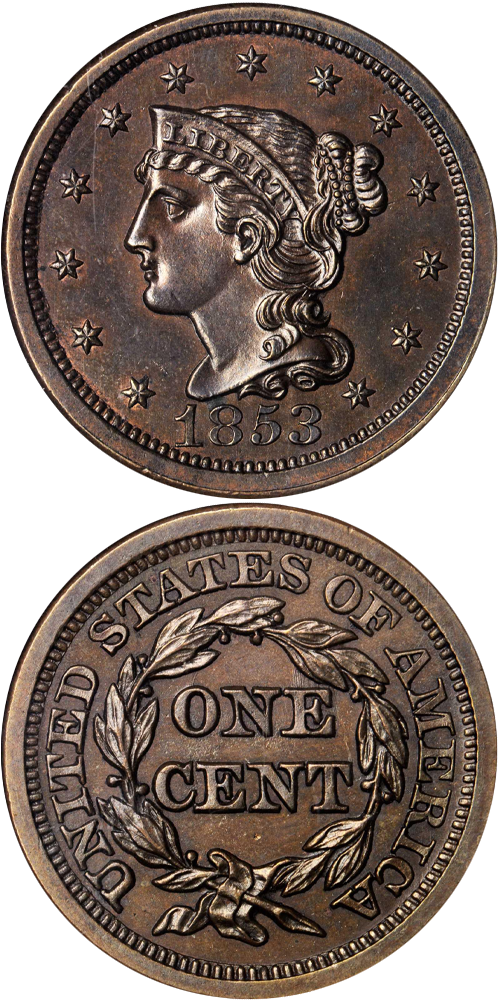1853 Braided Hair Cent
Some have questioned the existence of the 1853 cent in Proof. Walter Breen, in his Encyclopedia of United States and Colonial Proof Coins, reported one "supposedly in the proof set," referring to Tom Elder’s 1910 sale of the Peter Mougey Collection, lot 1277. This coin has not been seen or confirmed. Breen mentions a second example, that from Charles Steigerwalt's 1894 sale of the George Crawford Collection, a sale notable for its "copper Proofs," and later, New Netherlands' 41st sale. Breen concluded that this coin, an N-16, was an "early strike," and reported no confirmed Proofs known. In Bob Grellman's The Die Varieties of United States Large Cents, he discusses "Proofs" and comments that early strikes from the N-16 die pair have been called Proof in the past, noting the third-party certification of one lone specimen. While Grellman concludes that these are "highly questionable," as actual Proof strikes, he notably stops short of condemning them with finality. One of the difficulties with coins like this is that, often, those tasked with making a final decision do not have a good body of comparative pieces on hand to study. We have the good fortune of having access to an additional early state N-16, and it has been enlightening to study these coins side by side. While the Proof is admittedly not well made when compared with other Proof coins of the 1850s, this situation is seen on Proofs of other denominations of this year. Perhaps the best made is the 1853 dollar, but that seems to have been struck later. On the other hand, when compared with circulation strike coins, even these less than optimally made Proofs stand out as being obviously different. The unique coin shown here is an excellent case-in-point. The general appearance of the circulation strike N-16 is exactly what one would expect on a Gem large cent — lovely satiny surfaces, consistent through the fields and across the devices, with bold cartwheel luster. The Proof exhibits different field texture and no luster, which is substituted for the light reflectivity from the gently polished dies. The strike on the Proof is marginally better, and the greatest differences may be seen in the formation of the letters. On the circulation strike, they are rounded. On the Proof, they are gently squared and have a more refined appearance.
The example to the left was sold by Stack's Bowers Galleries in the Winter 2014 Baltimore Auction, where it realized $28,200 .






